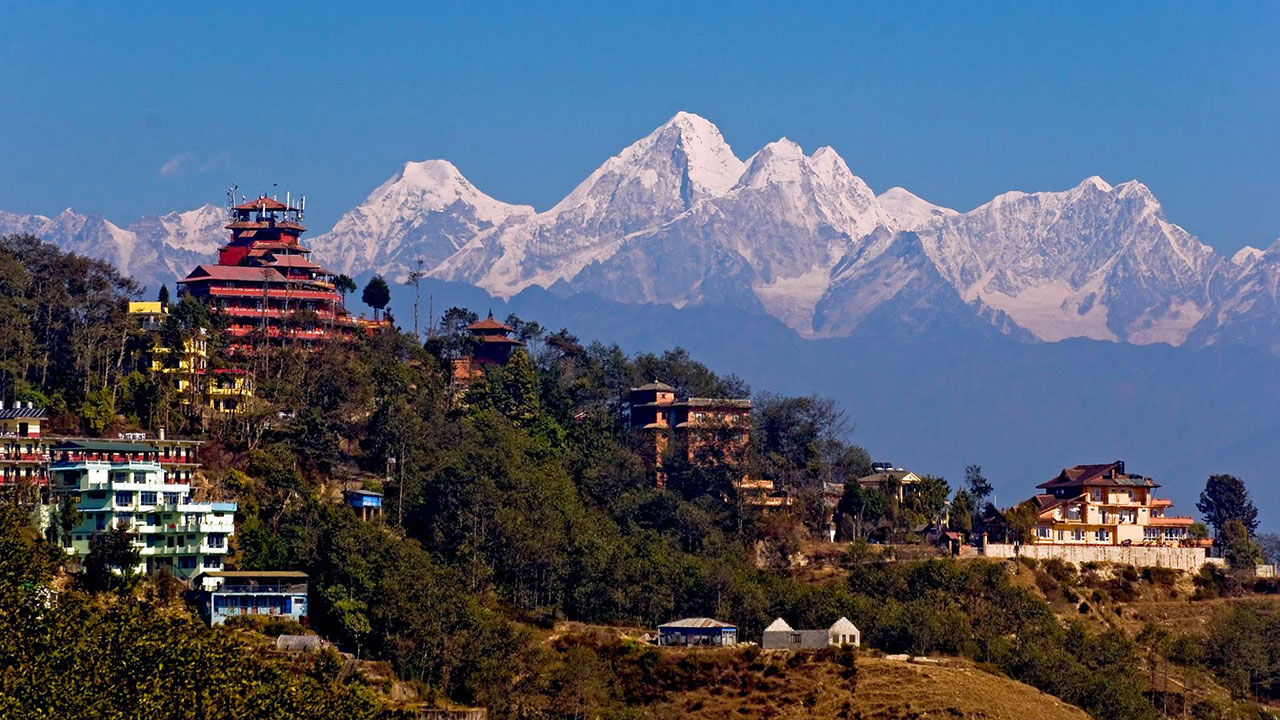


Kathmandu is the hub of Nepal’s traditional culture and arts. This is the place for rest, relaxation and easy-day sightseeing of historic and artistic temples and monuments, and mountain views. Kastamandap the source of the name Kathmandu and supposed to be made from the timber of a single tree and the Durbar Square are with its array of temples overlooked by the Hanuman Dhoka, , a name derived from the statue of Hanuman, the monkey devotee of Lord Ram, near the entrance of the palace. The Kathmandu Durbar Square holds the palaces of the Malla and Shah kings who ruled over the city. Along with these palaces, the square also surrounds quadrangles revealing courtyards and temples built back to as early as the Lichchhavi period in the third century.
Day 1: Arrival in Kathmandu
Welcome to Nepal! Upon arrival at Kathmandu International Airport, our local representative greets you with a flower garland and then escorts you to the hotel. Check-in in Hotel. Overnight at Kathmandu.
Overnight in Kathmandu.
Day 2: Kathmandu Valley sightseeing
Breakfast at Hotel. Later Full day sightseeing of Pasupatinath, Boudhanath, Kathmandu City.
Pashupatinath Temple: Pashupatinath Temple is one of the most significant Hindu temples of Shiva in the World, located on the banks of the Bagmati River in the eastern part of Kathmandu, the capital of Nepal and Bouddhanath Stupa: Bouddhanath is one of the holiest Buddhist sites in Kathmandu, Nepal. It is known as Khasti in Nepal Bhasa, JyarungKhasyor in Tamang language or as Bauddha by speakers of Nepali.
Kathmandu City: Kathmandu is the hub of Nepal’s traditional culture and arts. This is the place for rest, relaxation and easy-day sightseeing of historic and artistic temples and monuments, and mountain views. Kastamandap the source of the name Kathmandu and supposed to be made from the timber of a single tree and the Durbar Square are with its array of temples overlooked by the Hanuman Dhoka, , a name derived from the statue of Hanuman, the monkey devotee of Lord Ram, near the entrance of the palace. The Kathmandu Durbar Square holds the palaces of the Malla and Shah kings who ruled over the city. Along with these palaces, the square also surrounds quadrangles revealing courtyards and temples built back to as early as the Lichchhavi period in the third century.
Day 3: Kathmandu
After breakfast we proceed to Nagarkot and sightseeing of Bhaktapur.
Nagarkot: It is a village in central Nepal, at the rim of the Kathmandu Valley. At the altitude of 2,200 m above sea level. It’s known for its views of the Himalayas, including Mount Everest to the northeast, which are especially striking at sunrise and sunset. The surrounding scrubland is laced with trails and home to many butterflies.
Bhaktapur: the city is also known, as like a museum of medieval art and architecture with many examples of sculpture, woodcarving and colossal pagoda temples consecrated to different gods and goddesses which is 15 km far from Kathmandu. It is a conglomeration of pagoda and Shikhar-style temples grouped around a fifty-five-window palace of brick and wood. The square is one of the most charming architectural showpieces of the Valley as it highlights the ancient arts of Nepal. The golden effigies of kings perched on the top of stone monoliths, the guardian deities looking out from their sanctuaries, the wood carvings in every place-struts, lintels, uprights, tympanums, gateways and windows-all seem to form a well-orchestrated symphony. Pottery and weaving are its major traditional industries
Overnight in Nagarkot.
Day 4: Kathmandu
Early morning sunrise view form the Hotel then After breakfast we drive back to Kathmandu check in in Hotel then later proceed to sightseeing of Swyambhunath and Kritipur.
Swayambhunath Stupa is the most ancient and enigmatic of all the holy shrines in Kathmandu valley. Its lofty white dome and glittering golden spire are visible for many miles and from all sides of the valley. Historical records found on a stone inscription give evidence that the stupa was already an important Buddhist pilgrimage destination by the 5th century AD. Swayambhunath stupa is also called the `Monkey Temple' because of the many hundreds of monkeys who scamper about the temple at night after the pilgrims and priests have departed.
Kirtipur: It is an ancient city of Nepal. It is located in the Kathmandu Valley 5 km south-west of the city of Kathmandu. It is one of the five municipalities in the valley, the others being Kathmandu, Lalitpur, Bhaktapur and MadhyapurThimi. It is one of the most famous and religious places to visit. It was part of the territory of Lalitpur at the time of the invasion of the Kathmandu Valley by the Gorkhali king Prithivi Narayan Shah in the 18th century. In 1767, Kirtipur was annexed to the Gorkhali kingdom by Prithvi Narayan Shah following the Battle of Kirtipur. He conquered the town on his third attempt, after entering it by trickery. After this, he cut off the noses of the people (both male and female) over 13 years of age in the city.
Overnight in Kathmandu.
Day 5: Departure Transfer
After breakfast drive to airport and transfer to connecting flights.
There are no reviews yet. Be the first one to write one.